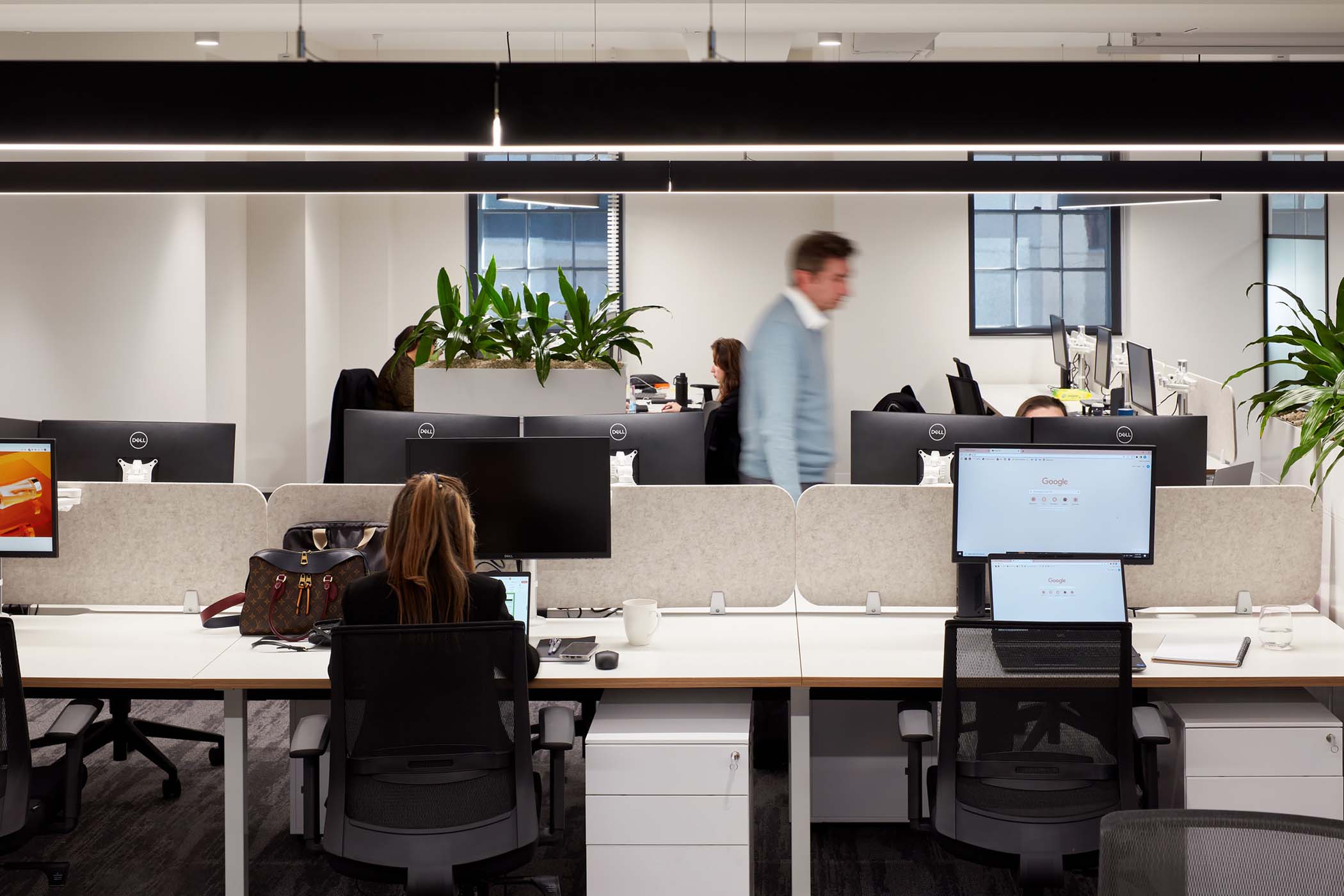There’s a growing trend among businesses across the world that are now mandating their people back into the office. For others, it’s a pipeline plan. It doesn’t matter where you are in your journey, it’s important that you know where you stand when it comes to a return to the workplace. So, what is hybrid work, and what do you need to consider as you strategise for the years ahead?
The hybrid work model
Hybrid work is a flexible work arrangement where employees have the option to divide their time between working remotely and working from a physical office or other designated workspace. In a hybrid work model, employees typically have the freedom to choose where they work based on their individual needs. While this flexibility can offer a more adaptable and inclusive work environment that accommodates diverse preferences, it’s up to individual organisations to assess whether it will work for them.
Is it time to embrace change?
We know that COVID has forever changed people’s priorities and how they work, but as we approach “COVID normal”, it’s an opportune time for organisations to consider the ways they want to work in the future and how they can support their people to do their best work. One way to do this is through the flexibility and choice afforded by hybrid work.
As Katie Smith, Strategy and Design Principal at Crest Interiors says, “if you want to incentivise your team back into the office, you need to think about your people - how do they work and what do they need?” In other words, you need to tailor your approach to suit your organisation.
Whatever you decide, it should be underpinned by a workplace strategy. This allows you to individually assess your employees and how they work, your core business directive and values and helps you determine what approach is best for your organisation. It also answers the question, if your team does come back to the office, how do they come back?
Create an office where people want to be
While end-of-trip facilities “are the tip of the iceberg,” according to Smith, it’s really important to offer your people the best experience you can. People’s expectations have changed and they want an office experience that is seamless and “easy”.
“Every organisation is different and every office is different, but it’s about trying to get the balance right,” she says.
For some, this may include how the physical office is set up and how it considers virtual teams meetings, collaboration, furniture solutions and acoustics. For others, it may be how it offers its people a sensory and visual experience to enhance how they feel in the office space. Whatever approach you take, our top tip is to communicate your vision and plan back to your staff. This way, they are kept in the loop and are much more likely to be on board with any changes.

Consider the cultural implications
One of the pain points for businesses over the past few years has been sustaining company culture against the backdrop of a disparate workforce. The same can be said of employees who have craved that connection and those social touch points.
One thing to consider is how a hybrid work environment may help to recreate or revitalise your company culture and act as a framework in which your values can be embedded. “It’s a platform not only to create a cultural experience but to establish expectations of people and how they interact and communicate. It provides a level of accountability that just can’t be matched virtually,” Smith adds.
This is especially true for leaders whose effectiveness is often measured by their presence and visibility. And for the younger generations who are craving social connections and mentoring opportunities, a hybrid work model can be an impactful solution.
Strike the perfect work-life balance
Being back in the workplace, especially in a hybrid work environment, can help foster a healthier work-life balance that has been hard to strike over the past few years. Katie says, “during COVID there was a blurred line between when you stop work and keep going - productivity soared, but that was largely because people were working to a burnout level.” By having a commute and going to the office, you are creating a break line between work and life outside of work. Having that physical separation means employees can be fully focused on work-related tasks without the distractions that home can present. And there’s nothing quite like face-to-face engagement with colleagues to enrich collaboration and a positive work environment and in turn, reduce those feelings of isolation and burnout that so many people experienced during COVID.
For workplaces that provide additional amenities and facilities like gyms, classes or even child care, there are the added benefits of allowing employees to conveniently tend to their personal needs without sacrificing work commitments and ultimately striking that healthy equilibrium.
Find out more
If you'd like to see how we have supported our clients as they navigate the return to the office, get in touch with our team today.


